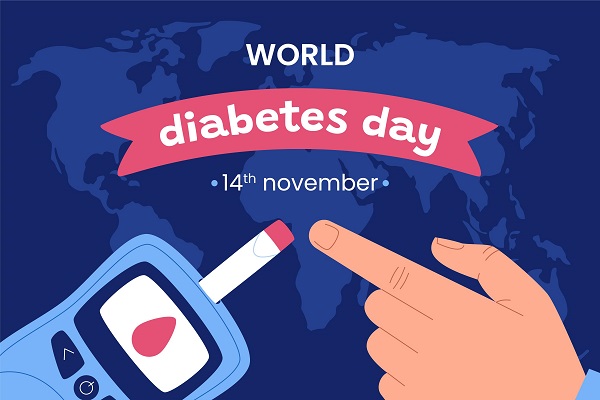Contributed by: Healthians Team
Bone cancer refers to an abnormal lump or a mass of unusual cells growing in a bone that destroys the normal bone tissues. It develops anywhere in your skeletal system such as in the outer layer, center, or on the surface of the bone. Bone cancer is rare and the tumors can be either benign or malignant. A benign bone cancer tumor is a non-cancerous one and does not spread to other parts of the body.
While benign tumors should not arise much concern, however, damage can occur to tissues, nerves, or blood vessels in close proximity, if pressure is exerted on them by the tumor. A malignant tumor on the other hand is a cancerous tumor or tumor made up of cancer cells that can invade nearby tissues. The cancerous cells of a malignant tumor can spread to other parts of the body via the bloodstream or lymph nodes, it is called metastasis.
Types of bone cancer
Bone cancer is of two types: Primary bone cancer and secondary bone cancer.
Primary bone cancer
Primary bone cancer also called bone sarcoma refers to a cancerous tumor that grows right in the cells of bone or the neighboring tissues (cartilage). Primary bone cancer is considered the most severe of all bone cancers. There is a total of 30 types of primary bone cancer variants, but the most common types of primary bone cancer include:
Osteosarcoma
Osteosarcoma refers to bone cancer that develops into cells that make or form bones. Generally, It can occur in any bone but often occurs in the long bones that make up arms or legs. People with osteosarcoma may feel few symptoms such as bone pain and swelling. Osteosarcoma afflicts both adults and children and is also known to occur in the elderly between the age of 70 to 80.
Ewing’s sarcoma
Ewing’s sarcoma refers to a rare type of cancer that occurs in and around the bones. It often develops in the legs, bones of the arms, and pelvis. It is often found in children and adults. People with Ewing’s sarcoma may feel some symptoms such as pain at the site of the tumor, a bone fracture, or fever.
Chondrosarcoma
Chondrosarcoma is a type of primary cancer that generally occurs in adults over the age of 40. It begins in your cartilage, a connective tissue that lines joints with each other, and spreads to the other bones. It grows slowly and often develops in the pelvis, upper legs or shoulders.
Secondary bone cancer
Cancer in your bone can also occur from any part of the body. For example, lung cancer can spread to your bones. Cancer that occurs when it spreads from one part to the other part of the body is termed metastatic cancer. The secondary bone cancer has the capability of spreading to the spinal column, the rib cage, the pelvic region, the legs, and the upper arms. Secondary bone cancer is far more common than primary bone cancer. and is generally found in adults. Some cancers that can commonly spread to bones include
- Breast cancer
- Prostate cancer
- Lung cancer
What causes bone cancer
The reasons behind bone cancer are still being researched and a mystery till now. However, some identified factors may contribute or enhance the chances of developing abnormal growth of cells in the bone. These include:
- Relentless cellular growth: Cells divide and replace with other cells, after this, they die but some cells do not die and develop uncontrollably. They grow abnormally and develop a mass of tissues that transforms into tumors.
- Genetics: The chances of bone cancer are greatly increased if there’s been a family history of any type of cancer. Also, some inherited illnesses, such as the Li-Fraumeni syndrome and retinoblastoma (eye cancer) increases the chances of bone cancer development. However, a faulty gene in one’s DNA that has nothing to do with hereditary conditions can also trigger bone cancer.
- Radiation therapy: People who have undergone or are taking radiation therapy or chemotherapy are at greater risk of developing osteosarcoma (a bone cancer variant)
Symptoms of bone cancer
People with bone cancer may experience its first symptoms known as ‘nagging’, which essentially means continuous pain in the area afflicted with cancer. The pain intensity differs from case to case, however, for a handful of the patients, the ‘nagging’ is mild. . The rise of pain in Ewing sarcoma cancer can be more aggressive as compared to other types of bone cancer. A person with bone cancer may experience several symptoms including:
- Fever
- Night sweats
- Inflammation around the bone
- Limps
- Fatigue
- Unexpected weight loss
- Weakening of bones that lead to a higher risk of fracture
- A lump in the affected area
Treatment
People with benign tumors can be cured with medications or sometimes the doctor waits for some changes. The doctor may also remove the benign tumor if it has more chances to spread and becomes malignant. In rare cases, tumors can develop again even after treatment. People with malignant tumors require special care and treatment. The treatment of a malignant tumor depends upon various factors such as how far it has spread, its location in the body, how aggressive it is, and what stage it is at. Cancer cells that are just in the bone tumor and its neighboring area are known as a localized stage. Those cancer cells that have expanded to other parts of the body are more dangerous and difficult to treat. Treatments for bone cancer include:
- Targeted therapy
- Chemotherapy
- Radiation therapy
- Amputation
- limb salvage surgery
- Cryosurgery
- Surgery
The bottom line
With time, bone cancer treatment may cause some complications that are related to the heart, lungs, brain, hearing, fertility, or bones. It is imperative to be in contact with your doctor to have regular checkups to keep a check on the complications and to prevent future relapses.




